Sancti Petri is an island near Cadiz with a shrine to Melqart, an abandoned fishing town and a modern resort with magnificent beaches.
By Nick Nutter | Updated 9 May 2022 | Cádiz | Villages |
Login to add to YOUR Favourites or Read Later

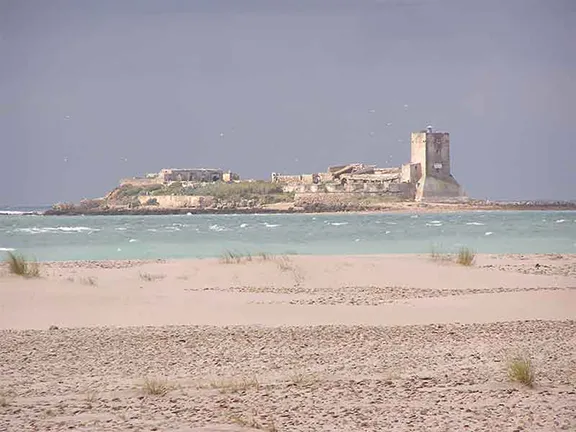
Isla de Sancti Petri
In the 9th century BC, the Phoenicians established a settlement that would grow into the city of Cadiz. They had chosen a narrow spit of land that projected into what is now the Bay of Cadiz. At the southern end of the spit they built a temple to their god Melqart. Over time the sea flooded the spit, leaving the temple on an island. Today it is known as the island of Sancti Petri. Opposite the island, across the Caño de Sancti Petri, on a second spit that spears north into the salt marshes south of the Isla de Leon, is the now abandoned fishing town of Sancti Petri and a short distance south of the old town, on the mainland, the newly built leisure complex and modern town of Novo Sancti Petri. The whole area is within the protected Bahia de Cádiz Parque Natural, a haven for wading birds, walkers and cyclists.
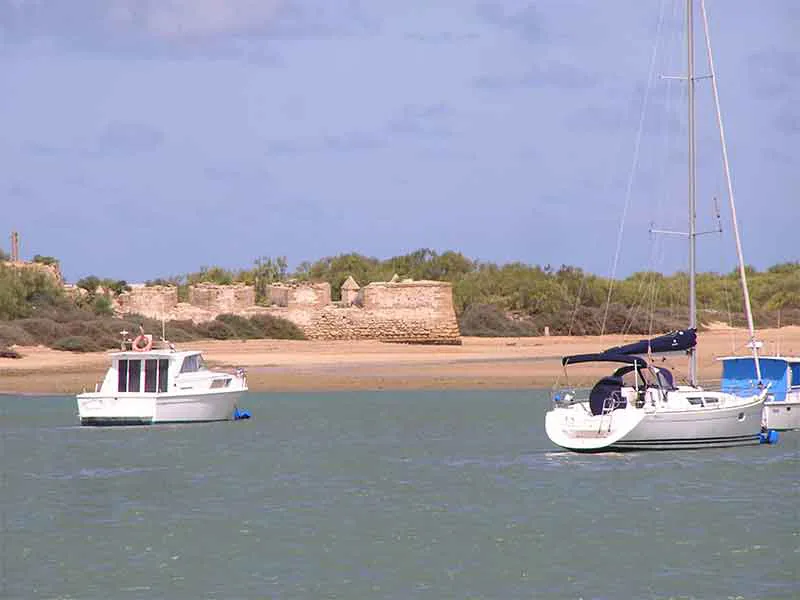
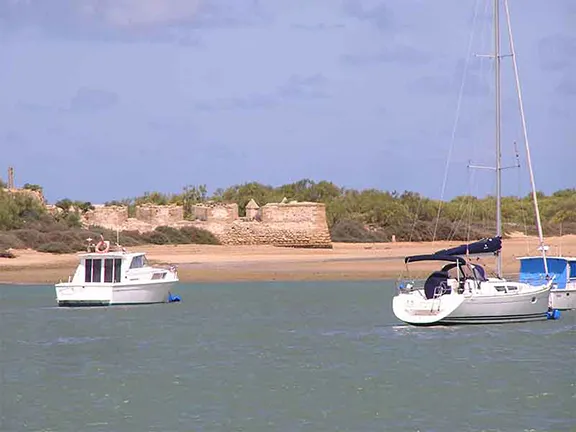
Estuary Sancti Petri
Historians too find the area fascinating. The temple was reputed to have a portal of two bronze pillars, each 8 cubits high (about 4 metres) according to Strabo who was writing in the 1st century BC. Legend in those days claimed they were the true Pillars of Heracles and mariners regularly called off there to leave offerings to safeguard their passage. Strabo rather amusingly dissed the legend remarking that there was nothing in the inscriptions on the pillars mentioning Heracles (Hercules), rather they were an account of how much the temple had cost to build. Nevertheless that did not prevent the Romans from renovating and enlarging the shrine and installing a pair of massive bronze doors engraved with images depicting the Twelve Labours of Hercules. The Romans apparently believed that Hercules was buried at the shrine. The temple was at its most magnificent after the Emperor Trajan installed statuary in the 1st century AD. The Archaeological Museum in Cadiz now houses the finds dating from this period.
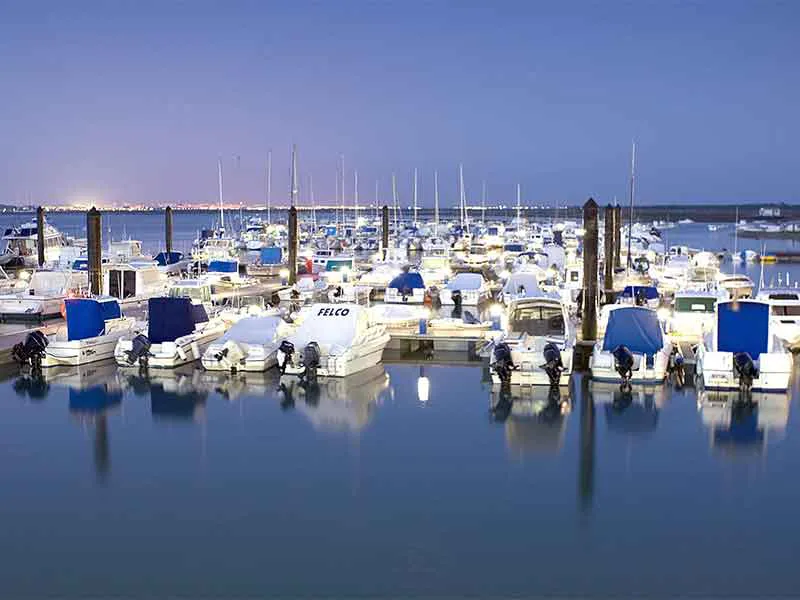
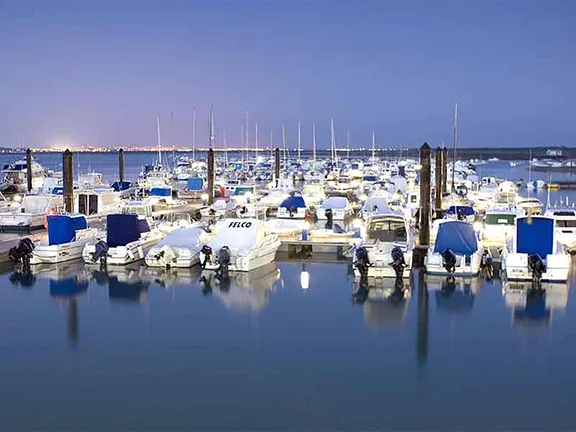
Marina at Sancti Petri
The island was still attached to the mainland when the Moors arrived. During the 12th century, they built a fortification to protect boats in the Caño de Sancti Petri. Their castle deteriorated until, in the 18th century, the castle seen today was built. It was badly damaged during the French occupation of Spain and the Siege of Cadiz in the early part of the 19th century. The castle again fell victim to the erosion of the sea and time until the 21st century. Partly restored the castle is now open to the public and has an exhibition of local history within its walls. Visitors must take a boat from the marina in Sancti Petri or from the Muello de Gallineras in San Fernando.
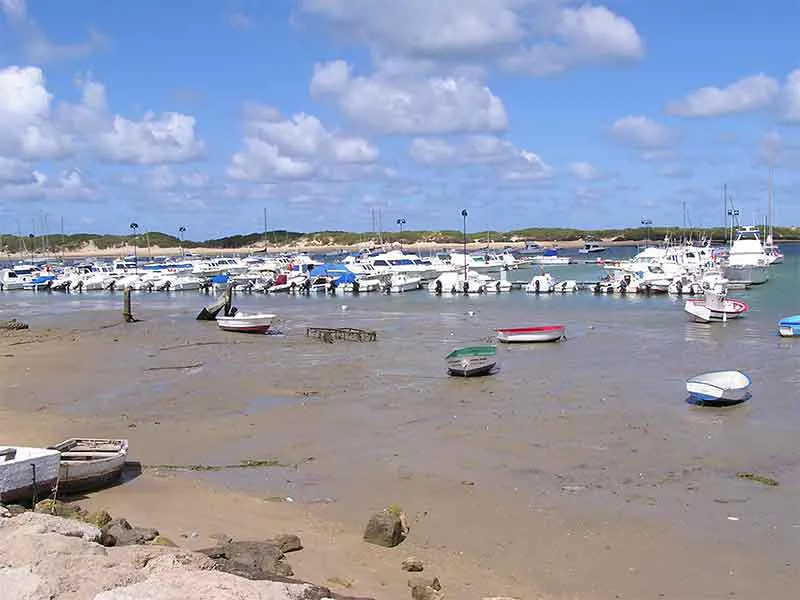
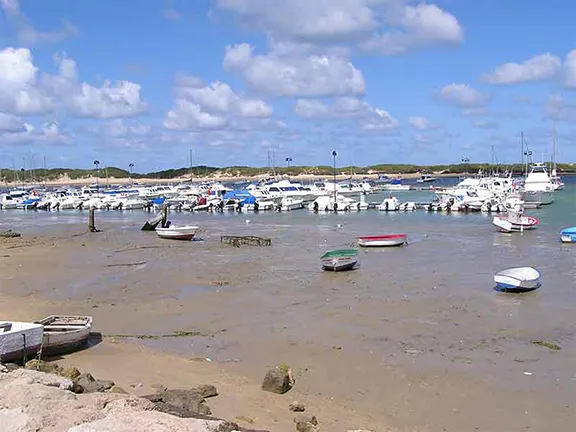
Mud berths
After the Napoleonic Wars, the old town of Sancti Petri started to expand. Its income derived from tuna fishing. Sadly it had a fairly short life and was finally abandoned in the 1970s. Rotting boats in the sheltered channel east of the spit and the abandoned houses are silent testimony to those days. New investment arrived and a new harbour was built on the western side of the spit. A few cafes and restaurants opened their doors to cater for the yachties in the marina and the tourists drawn to the long expanse of golden sand, Playa de la Barrosa, that stretches 8 kilometres south to the 18th century Torre del Puerco.
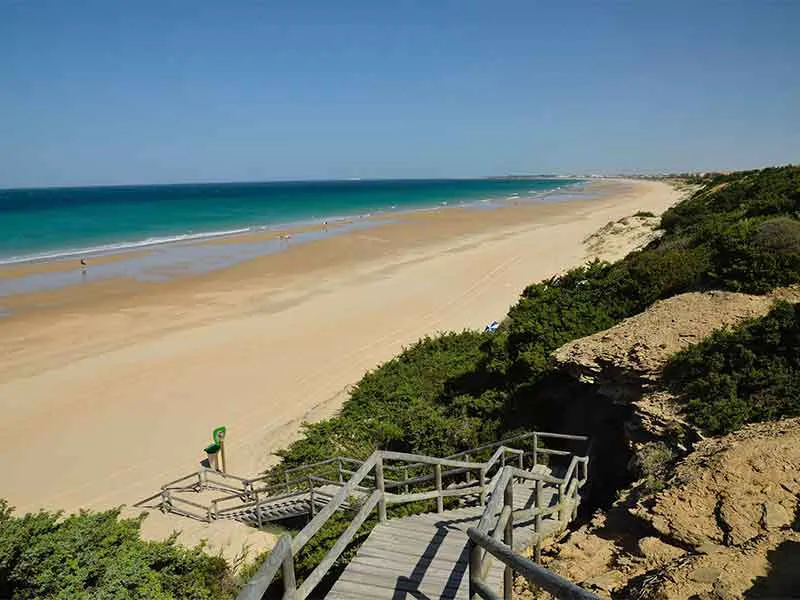
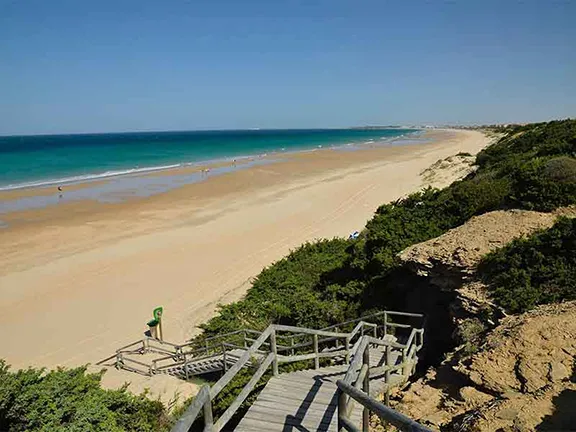
Playa Barrosa
In 1811 the Anglo Spanish forces in Cadiz had been holding out against the French siege since February of the previous year. In March 1811 the French decided to redeploy their forces, allowing the allied forces an opportunity to break the siege. The overall plan involved splitting the allied forces, one part being shipped to Tarifa to attack the French from the rear, the other attacking from Cadiz. Although the overall plan failed, the French continued the siege until the summer of 1812, the Battle of Barrosa, also known as the Battle of Chiclana was a little victory for the allies. A division under the command of Sir Thomas Graham defeated two French divisions under the command of Claude Victor-Perrin, capturing a regimental eagle in the process. The action took place near the Torre del Puerco.
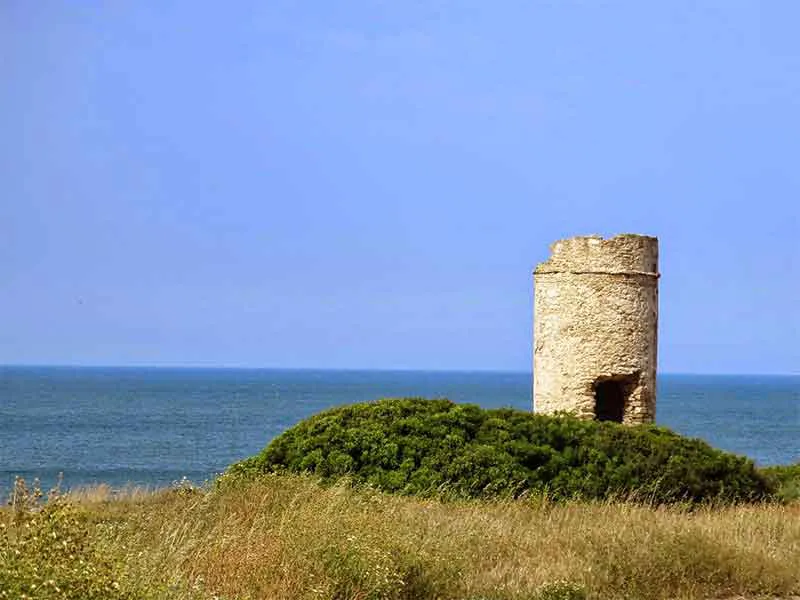
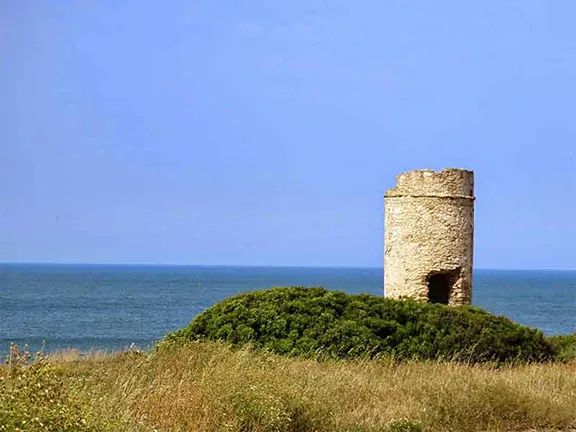
Torre del Puerco
Behind the beach the new town of Sancti Petri, complete with golf courses, hotels, self catering accommodation, shops, restaurants and bars sprang into being. For the visitor it is a great place to use as a base for exploring this fascinating coast. The town of Chiclana is a few kilometres inland, San Fernando and Cadiz are within a 30 minute drive and the Bahia de Cadiz with all its walking and cycling trails is on the doorstep. During the summer there are boat trips to the Isla de Sancti Petri, windsurfing, kayaking and a sailing school.